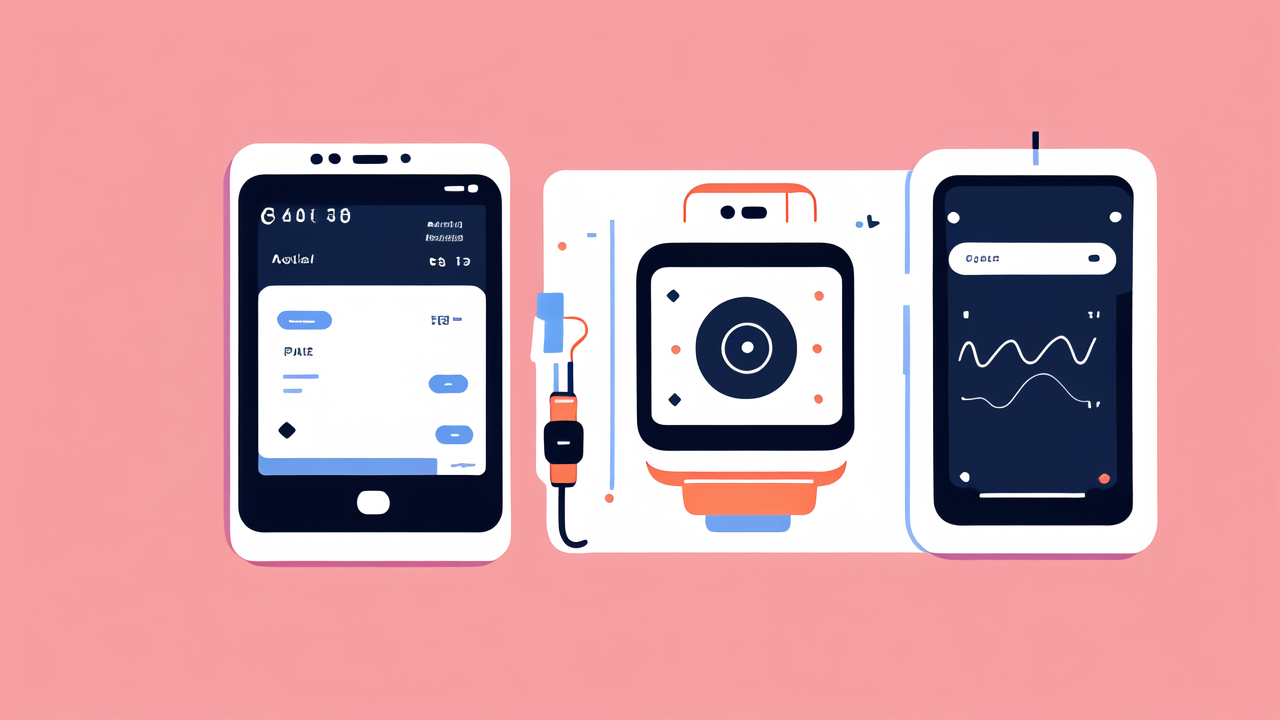The Evolution of Digital Watches in the United States
A Brief History of Digital Watches and Their Advent in America
Digital watches first appeared in the U.S. in the 1970s. They were a big leap from traditional watches. These new devices showed time with numbers, not hands. At first, they were expensive and only for tech fans. But soon, they became more affordable and popular.

In the 1980s, digital watches got better. They had more features like alarms and stopwatches. Brands like Casio made them cool for kids and adults. By the 1990s, digital watches were everywhere. They were cheap, reliable, and easy to use.
The 2000s brought a new change. Watches started to do more than tell time. They could track steps and heart rate. This was the start of today's smart watches. Now, digital watches are part of our daily lives. They help us stay healthy and connected.
Key Technological Innovations Shaping Today's Digital Watches
Today's digital watches are far more advanced. They're not just for telling time. They're mini-computers on our wrists. Here are some key innovations:
- Touch screens: Many watches now have clear, responsive touch displays.
- GPS: Watches can track location for running or hiking.
- Heart rate monitors: They can check your pulse all day.
- Bluetooth: Watches can connect to phones for calls and messages.
- Apps: You can download apps for weather, music, and more.
- Water resistance: Many watches are now safe for swimming.
- Long battery life: Some can last for days or weeks on one charge.
These features make digital watches powerful tools. They help us stay fit, connected, and organized. As tech improves, watches will likely do even more in the future.
The Role of Wearable Technology in Modern-Day Life
Wearable tech, led by digital watches, plays a big role in our lives today. These devices are more than just accessories. They're health monitors, fitness coaches, and communication tools. Here's how they impact us:
- Health tracking: Watches monitor sleep, stress, and activity levels.
- Fitness motivation: They set goals and track progress, encouraging users to stay active.
- Quick communication: Notifications and messages are right on your wrist.
- Navigation: GPS features help with directions and location tracking.
- Contactless payments: Many watches can be used to pay for goods.
- Music control: Users can play and control music from their watch.
- Emergency alerts: Some watches can detect falls and call for help.
Digital watches have become personal assistants. They help us manage our health, work, and social lives. As they get smarter, they'll likely become even more central to how we live and work.
Health and Wellness Features in Digital Watches
Advanced Metrics for Fitness Enthusiasts
Digital watches offer a wealth of data for fitness fans. They go beyond basic step counting. Here are some advanced metrics:

- VO2 max: This measures how well your body uses oxygen during exercise.
- Recovery time: Watches can suggest how long to rest between workouts.
- Training load: This shows how hard you've been exercising over time.
- Running dynamics: Some watches track things like cadence and stride length.
- Swim tracking: Many can count laps and detect stroke types.
- Altitude acclimation: For hikers and climbers, watches can track how well you adjust to height.
- Stress levels: By measuring heart rate variability, watches can estimate stress.
These metrics help users train smarter. They can prevent overtraining and improve performance. For serious athletes, this data is like having a coach on your wrist.
Integrating Wellness Coaching and Personalization
Digital watches are becoming personal wellness coaches. They don't just collect data. They use it to give advice. Here's how:
- Sleep coaching: Watches analyze sleep patterns and suggest better habits.
- Workout recommendations: Based on your goals and fitness level, they create plans.
- Stress management: They may suggest breathing exercises when stress is high.
- Nutrition tracking: Some watches help log food and water intake.
- Menstrual cycle tracking: For women, watches can predict cycles and symptoms.
- Meditation guides: Many offer guided breathing and mindfulness exercises.
- Activity reminders: They prompt you to move if you've been still too long.
This coaching is often personalized. It adapts to your habits and progress. The more you use the watch, the better it understands you. This makes the advice more relevant and helpful.
The Future of Wearable Technology in Healthcare
Wearable tech, especially digital watches, is changing healthcare. Here's what we might see in the future:
- Early disease detection: Watches might spot signs of illness before symptoms show.
- Continuous glucose monitoring: For diabetics, this could replace finger pricks.
- Blood pressure tracking: Some watches are already testing this feature.
- ECG monitoring: More watches will likely offer this heart health tool.
- Medication reminders: Watches could help people stick to treatment plans.
- Remote patient monitoring: Doctors might use watch data to check on patients.
- Mental health support: Watches could detect mood changes and offer support.
These advances could make healthcare more proactive. Instead of reacting to illness, we might prevent it. Watches could become key tools for both doctors and patients. They might help us live healthier, longer lives.
The Market Dynamics of Digital Watches in the U.S.
Analysis of Consumer Demand and Market Growth
The U.S. digital watch market is booming. More people want these smart devices. Here's what's driving growth:

- Health awareness: People want to track their fitness and wellness.
- Tech integration: Watches that work with phones are very popular.
- Style factor: Many see smart watches as fashion items.
- Aging population: Older adults use watches for health monitoring.
- Youth market: Young people like the tech and social features.
- Price range: There are now watches for every budget.
- Corporate wellness: Some companies give employees watches for health programs.
Sales numbers show steady growth. The pandemic boosted interest in health tech. Now, many see digital watches as must-have items. As features improve, more people are likely to buy them.
The Competitive Landscape of Digital Watch Manufacturers
The digital watch market is very competitive. Several big players dominate, but new brands are emerging. Here's an overview:
- Apple: Leads in smart watch sales with the Apple Watch.
- Fitbit: Known for fitness trackers, now part of Google.
- Garmin: Popular with athletes for its advanced sports features.
- Samsung: Offers watches that work well with its phones.
- Fossil: Brings fashion focus to smart watches.
- Amazfit: Gaining ground with affordable, feature-rich options.
- Withings: Stands out with watches that look traditional but are smart inside.
These companies compete on features, style, and price. Some focus on fitness, others on general use. Innovation is constant as they try to stand out. This competition benefits consumers with better products.
How Digital Watches are Shaping Consumer Electronics and Lifestyle Trends
Digital watches are changing how we use tech and live our lives. Here's their impact:
- Always-on health monitoring: People expect constant health data now.
- Reduced smartphone use: Watches let us check info without phones.
- Contactless payments: More people pay with their watches.
- Fitness gamification: Watches make exercise feel like a game.
- Sleep awareness: Many now track sleep quality regularly.
- Tech fashion: Watches are now style statements too.
- Data-driven decisions: People use watch data to make lifestyle choices.
These trends affect other products too. Phones, apps, and even clothes are adapting to work with watches. Companies are creating ecosystems around these devices. This is changing how we think about personal tech and health.
Digital watches have become central to many people's daily routines. They're not just gadgets, but lifestyle tools. As they evolve, they'll likely shape our habits even more.




Leave a comment
This site is protected by hCaptcha and the hCaptcha Privacy Policy and Terms of Service apply.